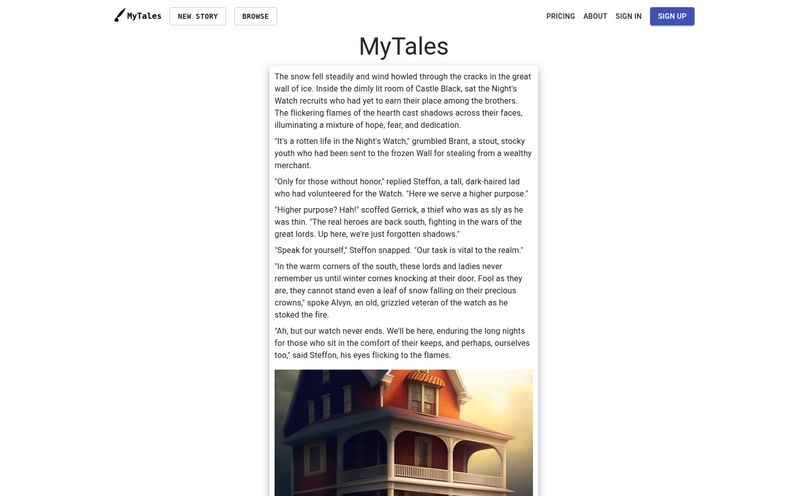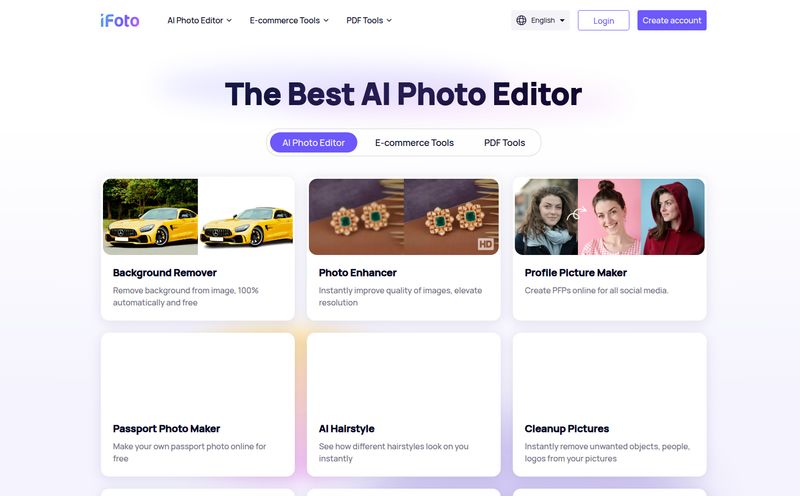In the whirlwind of AI advancements, a new tool seems to pop up every single day. Seriously. You blink, and there are three new AI-powered-everythings promising to change your life. As someone who’s been in the SEO and digital marketing trenches for years, I’ve seen these waves come and go. And lately, the big wave has been AI image generation.
We've all seen the hyper-realistic, mind-bending creations from giants like Midjourney or Stable Diffusion. They're incredible, but they often come with a learning curve steeper than a mountain goat’s climbing route, not to mention a subscription fee. That's why I've always had a soft spot for the little guys—the simple, no-fuss tools that just want to let you play. And that’s what Pixa was supposed to be. A free, no-signup-needed AI art generator for the people.
I went to check it out again recently, ready to whip up a few quick blog images, and was greeted by… well, nothing. A stark, grey 404 error. The digital equivalent of a “Sorry, we’re closed” sign on a dusty storefront. So, what happened to this promising little tool? Let's take a walk down memory lane and investigate.

Visit Pixa
What Exactly Was Pixa AI?
Pixa’s proposition was as simple as its interface. It was a free AI art generator. That was it. No credit card, no email, no password you’d inevitably forget. You just landed on the page, typed what you wanted to see into a box, and voilà—AI art.
In a world of freemium models, credit packs, and tiered subscriptions, this was a breath of fresh air. It was built on the idea of pure accessibility. You didn't need to be a tech wizard or a digital artist. You just needed an idea. A “cyberpunk cat drinking a cup of tea on Mars,” perhaps? Pixa was there to try and make it happen. It was powered by a company called KingEko.com, and while I’m not super familiar with them, it seemed like a passion project, a way to put a cool piece of tech out into the world for free.
The Beauty of Simplicity (And Its Downsides)
When you first looked at Pixa, you could see its charm immediately. Let’s break down what made it appealing and where the cracks started to show.
What Pixa Did Right
The biggest selling point was its frictionless experience. The fact that it was genuinely free, without a sneaky trial period or limited “new user” credits, was a massive plus. You could generate images all day if you wanted, and it wouldn't cost you a dime. This, combined with the lack of a sign-up process, made it the perfect digital playground. It was quick, it was easy, and it invited experimentation without commitment. For a blogger looking for a quick, unique featured image or a social media manager needing a fast graphic, Pixa was, in theory, a fantastic resource. The interface was so straightforward it barely needed explaining - a prompt box, a resolution dropdown, and a 'Generate' button. It was the notepad of AI art generators.
Where Pixa Faltered
Of course, no free lunch is perfect. The tool had its limitations. For one, the quality of the generated art was entirely at the mercy of your prompt. This is true for all AI image tools, but the more advanced platforms have complex models and parameters you can tweak. With Pixa, what you typed was what you got. A simple prompt like “a beautiful sunset” might give you something generic, while a poorly phrased one would result in the usual AI nightmare fuel of too many fingers and melting faces. Mastering the art of the prompt was still a necessity.
The resolution options were also quite limited, which isn't ideal for professional use where high-quality images are a must. And then there's the dependency on its parent, KingEko.com. When a tool is offered for free by a smaller entity, its lifespan is always a question mark. Running AI models, especially for image generation, requires a ton of expensive computing power (shoutout to GPU costs). It's a tough thing to sustain as a freebie forever.
The Mystery of the 404: A Digital Ghost Town
So, we arrive back at that 404 page. “Not Found. The resource requested could not be found on this server!” It’s so unceremonious, isn't it? One day a tool is there, the next it’s gone. What happened?
My educated guess? The project likely became unsustainable. The server and processing costs probably piled up, and without a monetization strategy (like ads or a paid tier), the plug had to be pulled. It’s a classic story in the startup world. A great idea, a functional product, but an economic model that just couldn't last. It could also be a temporary issue, a server migration gone wrong, but the longer a 404 stays up, the more it feels permanent.
Pixa has become a digital ghost town—a reminder of a cool idea that might have been a bit ahead of its time, or at least its budget. It’s a bummer, for sure. I'll miss the simplicity.
So, Where Do We Go for Free AI Art Now?
The good news is that the spirit of Pixa lives on in other tools. If you're looking for free or mostly-free AI art generation without the complexity of a command-line interface, you still have some fantastic options.
- Microsoft Designer (formerly Bing Image Creator): Integrated right into the Microsoft ecosystem, this tool is powered by DALL-E 3 and is shockingly good for a free service. You get a set of fast-generation “boosts” that refresh, but even after they run out, you can still create images, just a bit slower.
- Leonardo.Ai: This is a personal favorite. It’s a freemium model, but you get a generous daily allowance of tokens to generate images. It’s more complex than Pixa was, with different models and settings, but it offers incredible quality and control for a free user.
- Playground AI: Similar to Leonardo, Playground offers a free tier with a daily limit on image creations. It's user-friendly and produces some really high-quality, artistic results.
These platforms may require a sign-up, but they provide a stable and powerful alternative for anyone who was intrigued by Pixa’s promise. They've found a way to balance cost and accessibility, which is the name of the game.
Frequently Asked Questions
- What was the Pixa AI art generator?
- Pixa was a simple, web-based AI tool that allowed users to generate images from text prompts completely for free and without needing to create an account.
- Was Pixa AI really free to use?
- Yes, it was one of its main selling points. There were no fees, subscriptions, or credit systems. Its simplicity and cost-free nature made it very accessible to beginners.
- Why can't I access the Pixa website anymore?
- The website currently displays a 404 error, meaning the page is gone. While the exact reason isn't public, it’s highly likely the project was shut down, possibly due to the high operational costs of running an AI service for free.
- What are the best free alternatives to Pixa?
- Great alternatives that offer free tiers include Microsoft Designer (Bing Image Creator), Leonardo.Ai, and Playground AI. They may require an account but provide powerful features and high-quality results.
- Is AI art generation difficult?
- It can be as easy or as complex as you want it to be. Simple tools like Pixa made it very easy. More advanced platforms have a learning curve but offer more creative control. The key skill is learning how to write effective prompts.
- What does it mean that AI image quality 'depends on the prompt'?
- This means the detail and descriptiveness of your text input directly influence the final image. A vague prompt like "dog" will produce a generic image, whereas a detailed prompt like "a photorealistic portrait of a golden retriever wearing a tiny hat, sitting in a sunlit library" will yield a much more specific and often higher-quality result.
A Final Thought on Pixa
So, here’s to Pixa. A fleeting but fun little tool that embodied the early, exciting days of democratized AI. It might be gone, but its spirit of simplicity and accessibility is something I hope to see more of. It’s a good reminder that in the fast-paced world of tech, sometimes the most promising sparks burn out the quickest. But they still light the way for others. Now, if you'll excuse me, I'm off to Leonardo.Ai to try and create a “digital ghost town for defunct websites.” Seems fitting, dont you think?



